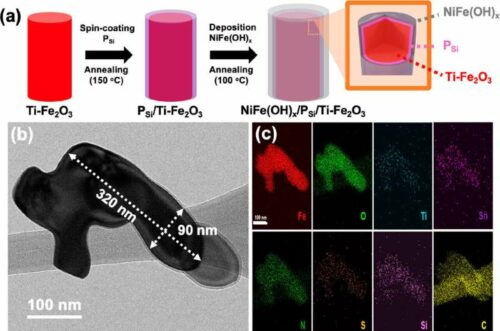- Offers cost-effectiveness and efficiency, challenging water damage limitations.
- A robust photoelectrode merging organics with inorganics reshapes hydrogen production and propels sustainable energy solutions closer to a carbon-neutral future.

The process of generating green hydrogen from solar energy revolves around the decomposition of water into its basic components, driven by charges generated within semiconductors that capture sunlight. Organic semiconductors present numerous benefits, including cost-effectiveness, versatility in manufacturing processes, and simplified large-scale production. Their solar energy conversion efficiency results in improved hydrogen production efficiency. Their vulnerability to water damage has historically restricted their use in photoelectrodes.
Under the leadership of Professor Ji-Hyun Jang from the School of Energy and Chemical Engineering at UNIST, a team of researchers has accomplished a noteworthy advancement in photoelectrode development. In a collaborative research effort involving Professor Junghoon Lee from Dongseo University and Dr. Hyo-Jin Ahn from the German Engineering Research and Development Center LSTME Busan, the team achieved the creation of a robust and efficient photoelectrode. This was accomplished by integrating organic semiconductors as an intermediate layer within the established inorganic semiconductor-based photoelectrodes. Previous research predominantly concentrated on the use of inorganic semiconductors in constructing photoelectrodes.
To address this issue, the research team applied a layer of organic semiconductors onto the surface of traditional iron oxide-based photoelectrodes. This coating ensured stability even when exposed to water. They introduced a nickel/iron double-layer hydroxide catalyst as an extra protective barrier over the organic semiconductor coating, preventing direct contact with water. This strategy enabled the charges generated from solar energy absorption to drive hydrogen production reactions efficiently.
In surpassing the constraints associated with conventional inorganic semiconductor-focused photoelectrodes, they have showcased the broader applicability of organic semiconductors in hydrogen production via photoelectrodes. This paves the way for improved efficiency and stability and is crucial in advancing sustainable energy solutions, a significant step toward a carbon-neutral future.






